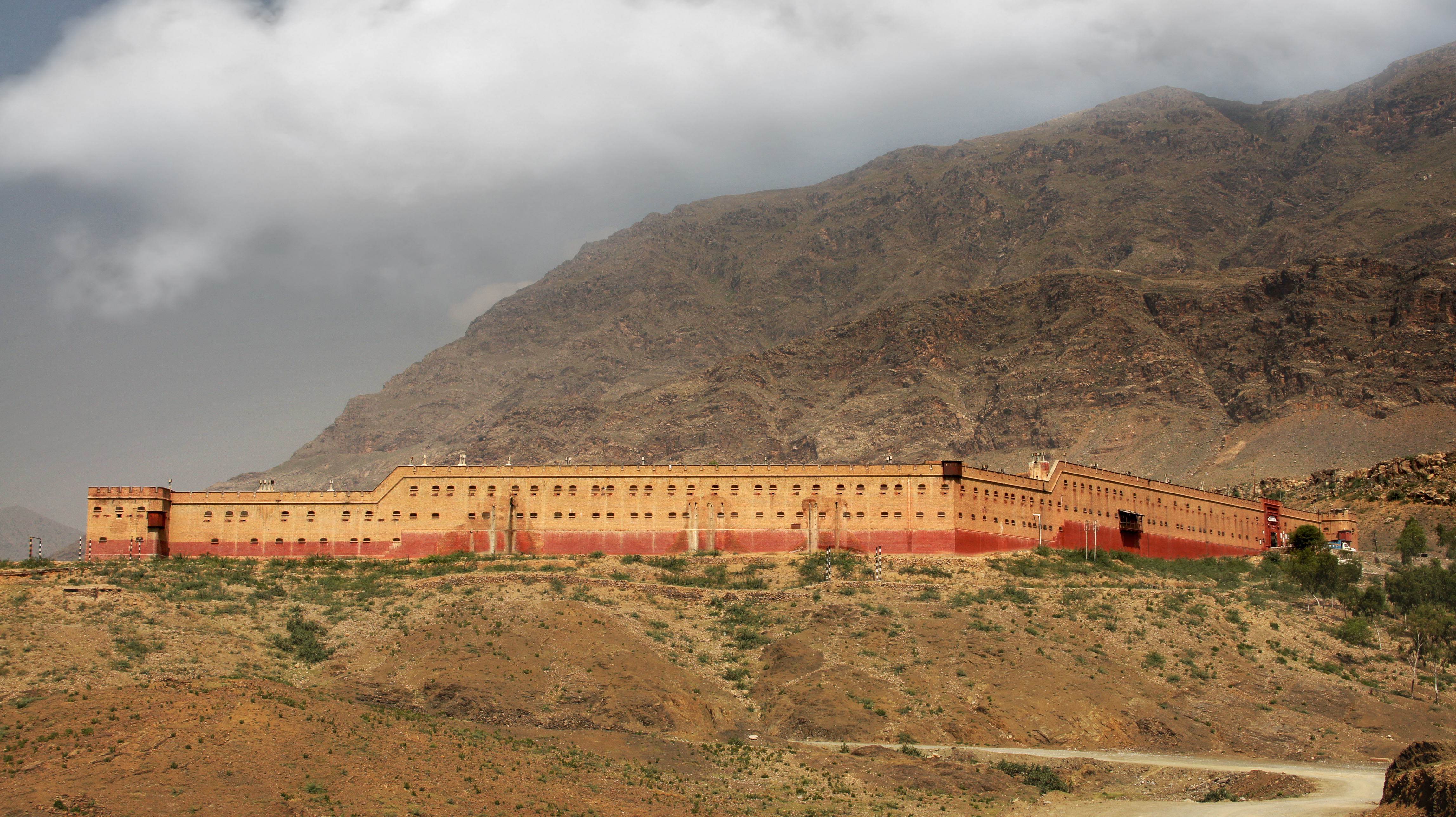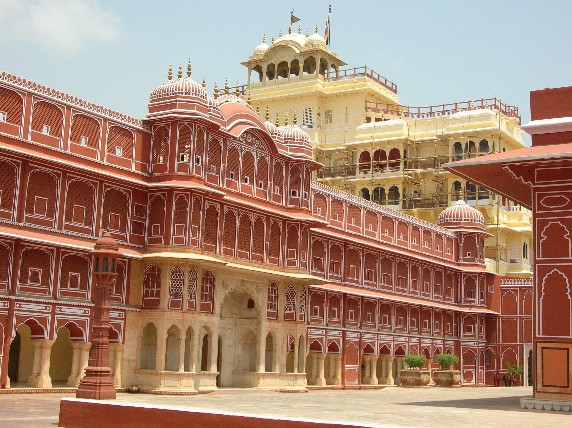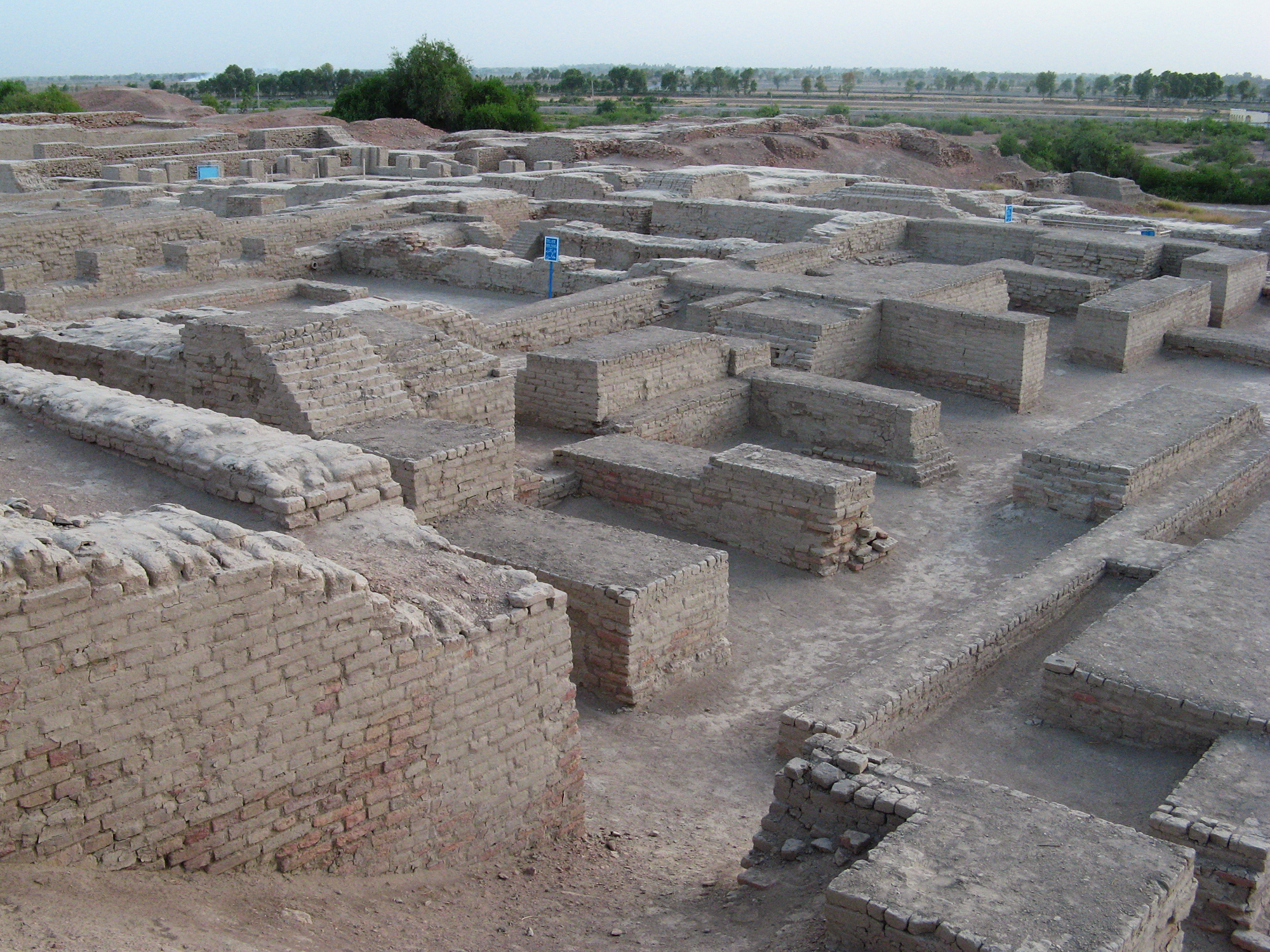|
Derawar Fort
Derawar Fort ( ur, ) is a fortress in Ahmadpur East Tehsil, Punjab, Pakistan. Approximately 20 km south of the city of Ahmedpur East, the forty bastions of Derawar are visible for many miles in the Cholistan Desert. The walls have a perimeter of 1500 metres and stand up to thirty metres high. Derawar fort was first built in the 9th century AD by Rai Jajja bhati, a Hindu Rajput ruler of the Bhati clan, as a tribute to Rawal Deoraj Bhati, the king of Jaisalmer and Bahawalpur. The region was part of Emirate of Multan ruled by the Arabs. The fort was initially known as ''Dera Rawal'', and later referred to as ''Dera Rawar'', which with the passage of time came to be pronounced ''Derawar'', its present name. In 711 CE, the fort was captured by the Arab Umayyad commander Muhammad ibn Qasim. It was thereafter ruled by the Emirate of Multan which was captured by Mahmud Ghaznavi in 1008 during his conquest of the Punjab. The fort was then captured by the Ghurids under Muhamma ... [...More Info...] [...Related Items...] OR: [Wikipedia] [Google] [Baidu] |
List Of Forts In Pakistan
The following is a partial list of forts and castles in Pakistan: See also * Tourism in Pakistan * List of UNESCO World Heritage Sites in Pakistan * List of museums in Pakistan * Lahore Fort * Rohtas Fort * Noor Mahal * Derawar Fort References External links Forts of Pakistan by Shaikh Muhammad Ali {{Castles in Pakistan Castles in Pakistan, * Forts in Pakistan, * Lists of forts, Pakistan Pakistan military-related lists, Forts Lists of tourist attractions in Pakistan, Forts ... [...More Info...] [...Related Items...] OR: [Wikipedia] [Google] [Baidu] |
Bhutto (clan)
Bhutto ( sd, ڀُٽو) is a Sindhi clan found in Sindh, Pakistan. The Bhutto's along with Bhatti's and other subclans are said to be a branch of the Bhati Rajputs. They have been settled in the area for over two centuries, having migrated to Sindh from Jaisalmer in India under Setho Khan Bhatti (Bhutto in Sindhi) in the seventeenth century. According to other authors, the family migrated to Sindh (mostly in Larkana and Sehwan) from Sarsa in Hissar.''Zulfikar Ali Bhutto: a memoir'', Chakar Ali Junejo, National Commission on History and Culture, 1996, p. 7 The Bhutto family The Bhutto family ( ur, بھُٹو خاندان; sd, ڀُٽو خاندان) is a prominent political family and among the most powerful families in Pakistan, based in the Pakistani province of Sindh. The Bhuttos have played a prominent role in Pak ... of Pakistan hails from this clan. References Rajput clans of Sindh Sindhi tribes Sindhi-language surnames Pakistani names Bhutto family {{Pakis ... [...More Info...] [...Related Items...] OR: [Wikipedia] [Google] [Baidu] |
Punjab
Punjab (; Punjabi: پنجاب ; ਪੰਜਾਬ ; ; also romanised as ''Panjāb'' or ''Panj-Āb'') is a geopolitical, cultural, and historical region in South Asia, specifically in the northern part of the Indian subcontinent, comprising areas of eastern Pakistan and northwestern India. Punjab's capital and largest city and historical and cultural centre is Lahore. The other major cities include Faisalabad, Rawalpindi, Gujranwala, Multan, Ludhiana, Amritsar, Sialkot, Chandigarh, Jalandhar, and Bahawalpur. Punjab grew out of the settlements along the five rivers, which served as an important route to the Near East as early as the ancient Indus Valley civilization, dating back to 3000 BCE, and had numerous migrations by the Indo-Aryan peoples. Agriculture has been the major economic feature of the Punjab and has therefore formed the foundation of Punjabi culture, with one's social status being determined by land ownership. The Punjab emerged as an important agricultura ... [...More Info...] [...Related Items...] OR: [Wikipedia] [Google] [Baidu] |
Forts In Punjab, Pakistan
A fortification is a military construction or building designed for the defense of territories in warfare, and is also used to establish rule in a region during peacetime. The term is derived from Latin ''fortis'' ("strong") and ''facere'' ("to make"). From very early history to modern times, defensive walls have often been necessary for cities to survive in an ever-changing world of invasion and conquest. Some settlements in the Indus Valley civilization were the first small cities to be fortified. In ancient Greece, large stone walls had been built in Mycenaean Greece, such as the ancient site of Mycenae (famous for the huge stone blocks of its 'cyclopean' walls). A Greek '' phrourion'' was a fortified collection of buildings used as a military garrison, and is the equivalent of the Roman castellum or English fortress. These constructions mainly served the purpose of a watch tower, to guard certain roads, passes, and borders. Though smaller than a real fortress, they acted ... [...More Info...] [...Related Items...] OR: [Wikipedia] [Google] [Baidu] |
Rajput Architecture
Rajput architecture is a architectural style notable for the forts and palaces of the many Rajput rulers, which are popular tourist attractions, many of the Rajput forts are UNESCO World Heritage Site. Rajput architecture represents different types of buildings, which may broadly be classed either as religious These include temples, forts, stepwells, gardens, and palaces. The forts were specially built for defense and military purposes. The Mughal architecture greatly influenced indigenous Rajput styles of art and architecture. Rajput architecture continued well into the 20th and 21st centuries, as the rulers of the princely states of British India commissioned vast palaces and other buildings, such as the Albert Hall Museum, Lalgarh Palace, and Umaid Bhawan Palace. These usually incorporated European styles as well, a practice which eventually led to the Indo-Saracenic style.Michell, George (1990), ''The Penguin Guide to the Monuments of India, Volume 1: Buddhist, Jai ... [...More Info...] [...Related Items...] OR: [Wikipedia] [Google] [Baidu] |
List Of Museums In Pakistan
This is a list of museums, galleries, and related building structures in Pakistan. Museums and galleries Archaeological and historical museums * Harappa Museum, Harappa * Bahawalpur Museum, Bahawalpur * Bannu Museum, Bannu * Chitral Museum * City Museum, Gorkhatri, Peshawar * Dir Museum, Chakdara * Hund Museum, Swabi * Kasur Museum, Kasur * Kalasha Dur Museum, Chitral * Lahore Museum, Lahore ... [...More Info...] [...Related Items...] OR: [Wikipedia] [Google] [Baidu] |
List Of World Heritage Sites In Pakistan
The United Nations Educational, Scientific and Cultural Organization (UNESCO) World Heritage Sites are places of importance to cultural or natural heritage as described in the UNESCO World Heritage Convention, established in 1972. Cultural heritage consists of monuments (such as architectural works, monumental sculptures, or inscriptions), groups of buildings, and sites (including archaeological sites). Natural features (consisting of physical and biological formations), geological and physiographical formations (including habitats of threatened species of animals and plants), and natural sites which are important from the point of view of science, conservation or natural beauty, are defined as natural heritage. Pakistan accepted the convention on 23 July 1976, making its sites eligible for inclusion on the list. , there are six World Heritage Sites in Pakistan, and a further 26 on the tentative list. The first three sites were listed in 1980, the Archaeological Ruins at Moenjodar ... [...More Info...] [...Related Items...] OR: [Wikipedia] [Google] [Baidu] |
Sadeq Mohammad Khan V
General Nawab Sir Sadiq Muhammad Khan V Abbasi ( ur, ) (born 29 September 1904, in Derawar – died 24 May 1966, in London) was the Nawab, and later Amir, of Bahawalpur State from 1907 to 1966. He became the Nawab on the death of his father when he was only three years old. A Council of Regency, with Sir Rahim Bakhsh as its President, ruled on his behalf until 1924. The Nawab served as an officer with the British Indian Army, fighting in the Third Afghan War (1919) and commanding forces in the Middle East during the Second World War. By 1947, its institutions consisted of departments run by trained civil servants; there was a Ministerial Cabinet headed by a prime minister; the State Bank was the Bank of Bahawalpur, with branches outside the State, including Karachi, Lahore ; there was a high court and lower courts; a trained police force and an army commanded by officers trained at the Royal Indian Military Academy at Dehra Doon. The Nawab had a keen interest in education ... [...More Info...] [...Related Items...] OR: [Wikipedia] [Google] [Baidu] |
Shikarpur, Sindh
Shikarpur ( sd, شڪارپور and ) ') is city and the capital of Shikarpur District in Sindh province of Pakistan. It is situated about 29 km west of the right bank of the Indus, with a railway station, 37 km north-west of Sukkur. It is the 42nd largest city of Pakistan by population according to the 2017 census. History According to a few historians the city of Shikarpur was revived during the Kalhora rule and that was what brought about a turnaround in making it the financial capital of not only South Asia but also of Central Asia. Some people think that the city was founded by Kalhoras' cousins Daudpotas --- and it was named Shikarpur because the Talpur Mirs were fond of shikar (hunting). Another school of thought believes Shikarpur was admittedly there before the shikar-loving Talpurs arrived on the scene; for another, Shikarpur has always been a trading and banking center, and never a hunting lodge. Some experts think that Shikarpur is really Shakaripur --- the ... [...More Info...] [...Related Items...] OR: [Wikipedia] [Google] [Baidu] |
Bahawal Khan V
Mohammad Bahawal Khan V (1883–1907), full title H.H. Rukn ud-Daula, Mukhlis ud-Daula, Hafiz ul-Mulk, Al-Haj Nawab Mohammad Bahawal Khan Abbasi V Bahadur, was the Nawab of the Kingdom of Bahawalpur, a former princely state of the British Raj, now part of Pakistan. He ruled from 1899 until his death. As Nawab of Bahawalpur he was entitled to a 17-gun salute. Biography Mohammad Bahawal Khan V was the second son by the second wife of Nawab Amir Sir Sadeq Mohammad Khan Abbasi IV Bahadur. In 1899, when he was only fifteen, Nawab Mohammad Bahawal Khan V ascended the throne of Bahawalpur following his father's death. He reigned under a Council of Superintendence until he came of age and was invested with full ruling powers in a ceremony attended by the Viceroy, Lord Curzon himself, at Derawar Fort on 12 November 1903. In 1902 Nawab Mohammad Bahawal Khan V was invited to London to attend the Coronation of Edward VII and Queen Alexandra at Westminster Abbey. He set out from Karachi ... [...More Info...] [...Related Items...] OR: [Wikipedia] [Google] [Baidu] |
Bahawalpur (princely State)
Bahawalpur (Urdu, skr, ) was a princely state of British India, and later Dominion of Pakistan, that was a part of the Punjab States Agency. It existed as an autonomous state, within Pakistan from 1947 to 1955, when it was dissolved and merged into the West Pakistani Province. The state covered an area of (17,494 sq mi) and had a population of 1,341,209 in 1941. The capital of the state was the town of Bahawalpur. The Bahawalpur state was founded in 1609 AD by Nawab Bahawal Khan Abbasi. On 22 February 1833, Abbasi III entered into a subsidiary alliance with the British, by which Bahawalpur was admitted as a princely state of British India. When British rule ended in 1947 and British India was partitioned into India and Pakistan, Bahawalpur joined the Dominion of Pakistan. Bahawalpur remained an autonomous entity until 14 October 1955, when it was merged with the province of West Pakistan. History The Abbasi tribe from whom the ruling family of Bahawalpur belongs, claim des ... [...More Info...] [...Related Items...] OR: [Wikipedia] [Google] [Baidu] |
Mughals
The Mughal Empire was an early-modern empire that controlled much of South Asia between the 16th and 19th centuries. Quote: "Although the first two Timurid emperors and many of their noblemen were recent migrants to the subcontinent, the dynasty and the empire itself became indisputably Indian. The interests and futures of all concerned were in India, not in ancestral homelands in the Middle East or Central Asia. Furthermore, the Mughal empire emerged from the Indian historical experience. It was the end product of a millennium of Muslim conquest, colonization, and state-building in the Indian subcontinent." For some two hundred years, the empire stretched from the outer fringes of the Indus River, Indus river basin in the west, northern Afghanistan in the northwest, and Kashmir in the north, to the highlands of present-day Assam and Bangladesh in the east, and the uplands of the Deccan Plateau in South India. Quote: "The realm so defined and governed was a vast territory of ... [...More Info...] [...Related Items...] OR: [Wikipedia] [Google] [Baidu] |







